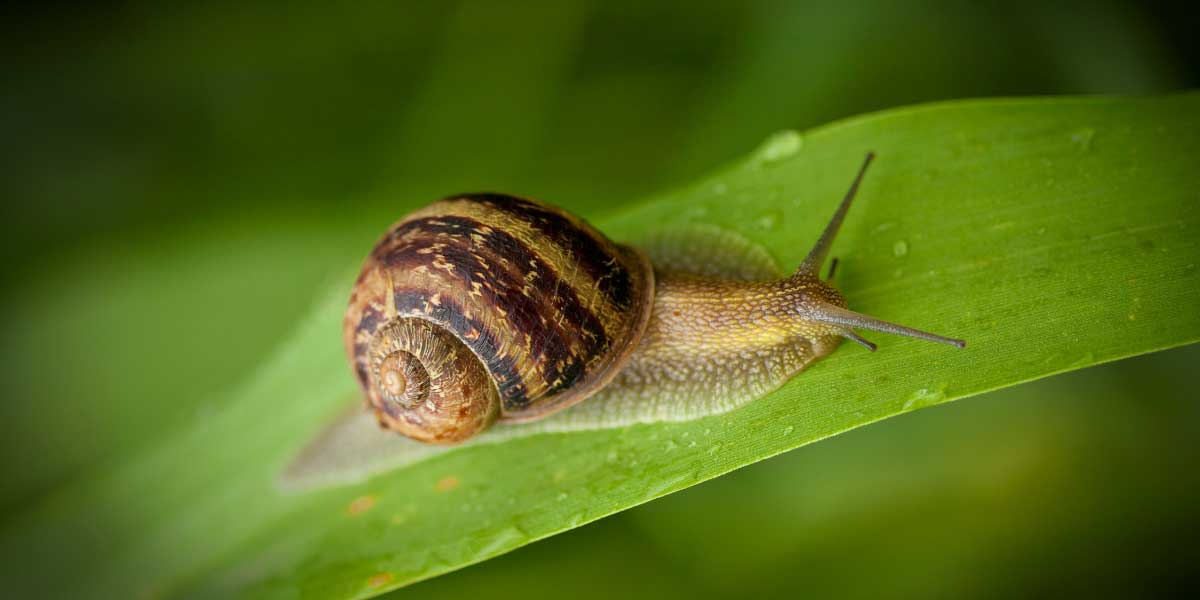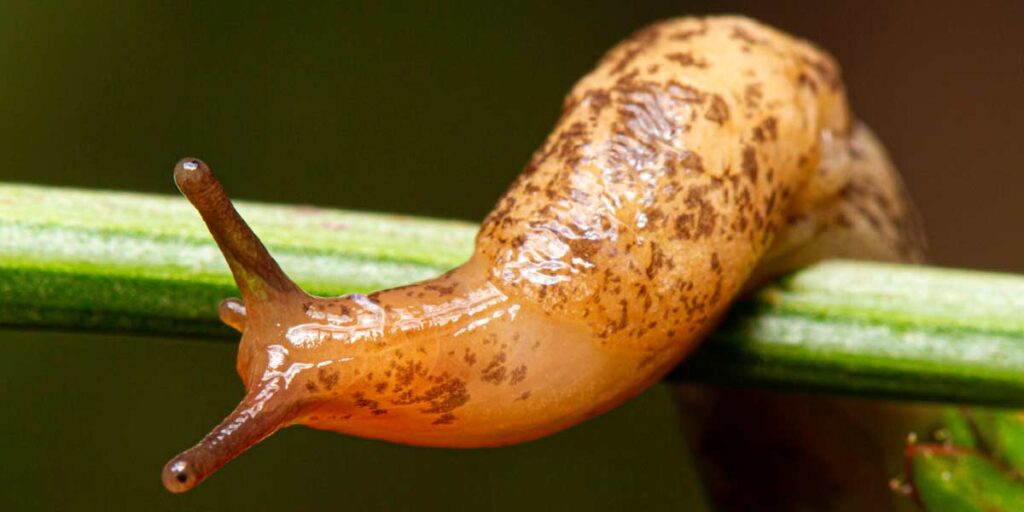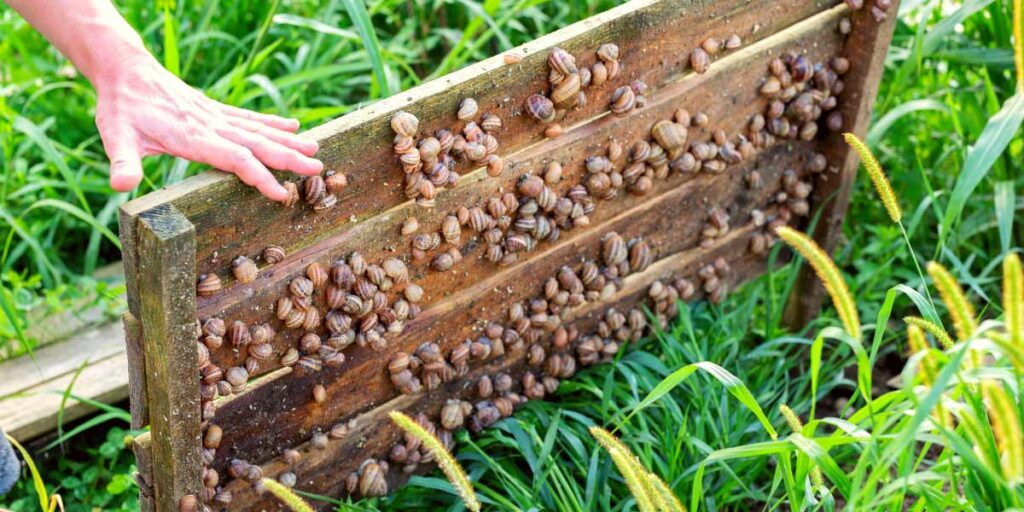

Snails and slugs are chomping, chewing pests—meaning they feed on your plant’s foliage, leaving nothing but decimation in their paths. They both prefer cool, wet weather, and feed mostly at night or during a downpour. Why? Because they’re so slow. If they fed during the day, they’d be a bird’s lunch in no time. So, you’ll see the most activity during the colder, darker, months of the year.
But they’re so small, how much damage could they possibly do? A lot, actually. An escargatoire of snails or a cornucopia of slugs (yes, these are real terms!) are capable of destroying multiple plants in a single night. They’ll eat your seedlings from tip to root and disappear into the darkness, like little slippery ninjas.

Slugs and snails are notoriously hard to discourage in your garden, but there are a few things you can try. First, remove hiding areas. Because slugs and snails are mostly active at night, they need a place to hide during the day. Any cool, damp, and dark area will do, so take away any hiding place matching this description—overturned pots, wooden planks, and loose rocks, for example.
Next, create a barrier. Because slugs and snails move using a big, lubricated foot, they absolutely detest sharp or crumbly surfaces. So, sprinkle some coffee grounds, eggshells, or sand around your plants to keep the slick little pests away. However, the barrier method tends to have mixed results.

Are your leafy greens looking a bit holey? Luckily, once you’ve got snails and slugs, there are a heap of ways to keep them in check. But unfortunately, most of them are tedious.
You could try supplying a hiding place. Counterintuitive, I know. However, by supplying a hiding place, you can easily round up and exterminate any slugs and snails in the morning. Continue this for a few nights and you should be good as gold (for a little while, anyway).
Want to get a little more creative? Try a trap. Dig a hole in your garden and place an old ice cream container inside, so the edges are level with the dirt. Fill it with beer, and watch the slugs and snails trap themselves. You’ll need to keep refilling your trap, though, or else the snail population will be back with a vengeance.
Note: please avoid using snail bait in your garden. Snail bait is extremely toxic to pets and wildlife, so even though it’s an easy option, its definitely not worth the risk.

Our trusted Local Expert professional builders are standing by.
Click here to learn more or request a quote today!
Are you a business owner looking to build your service?
Apply now and become part of the Local Expert team today.